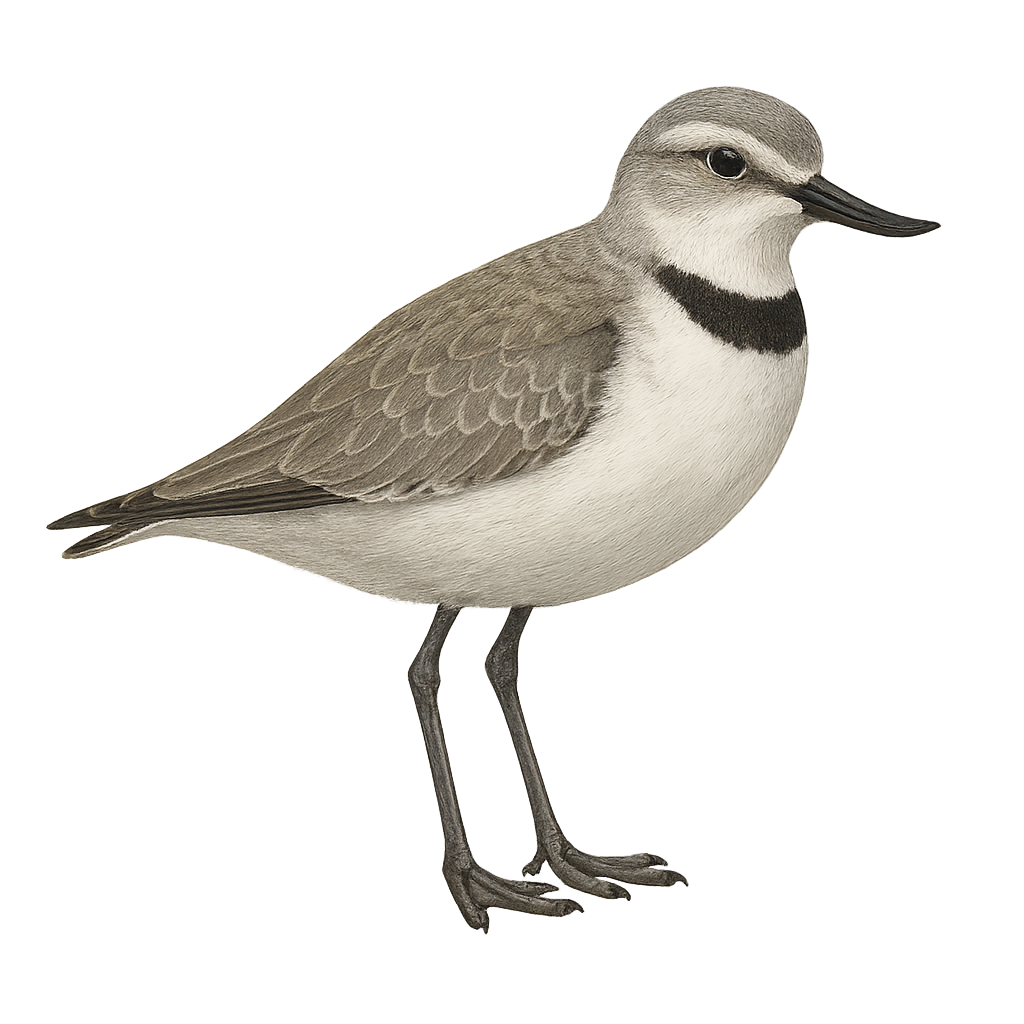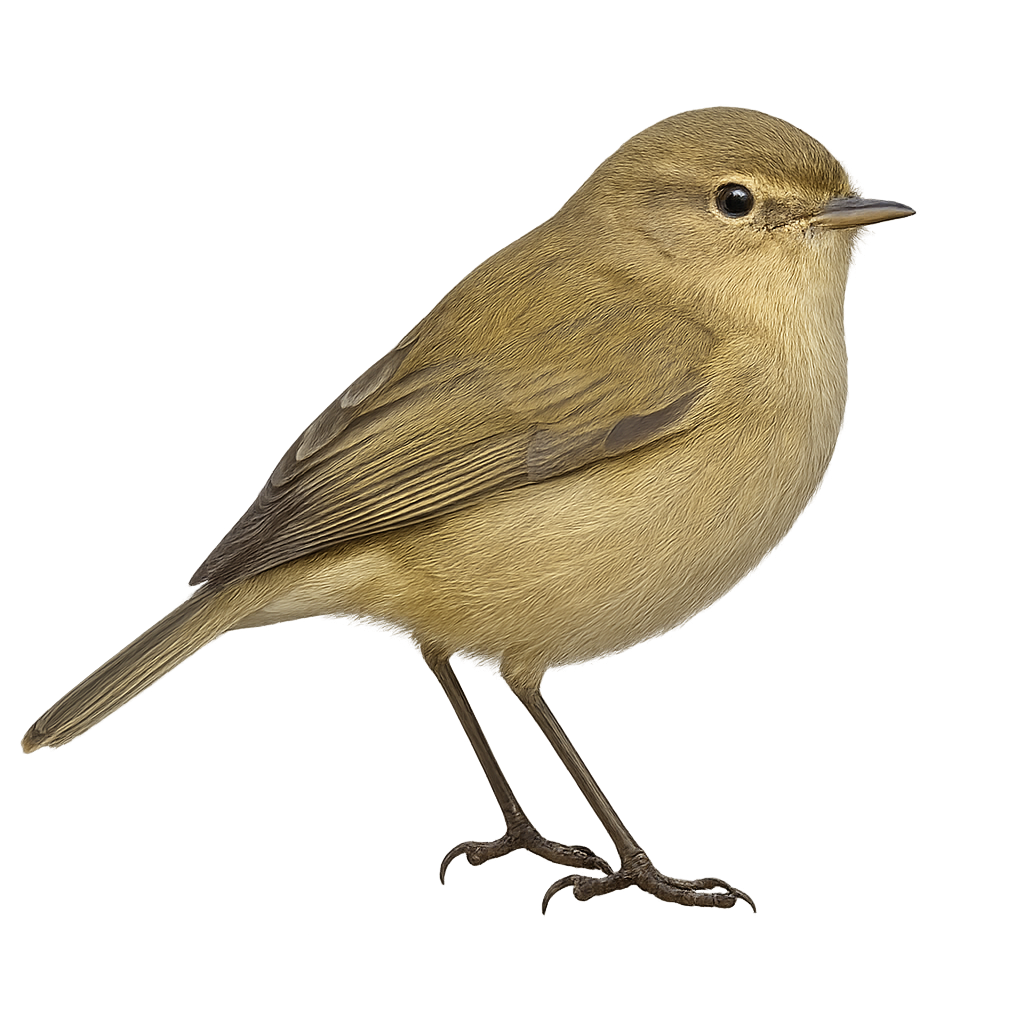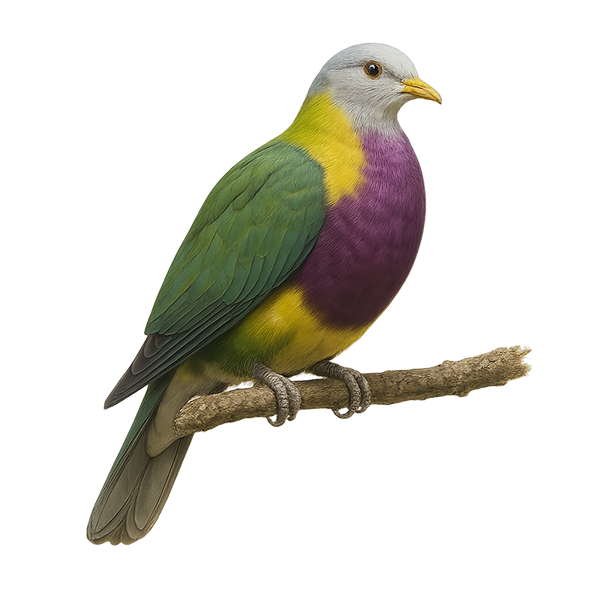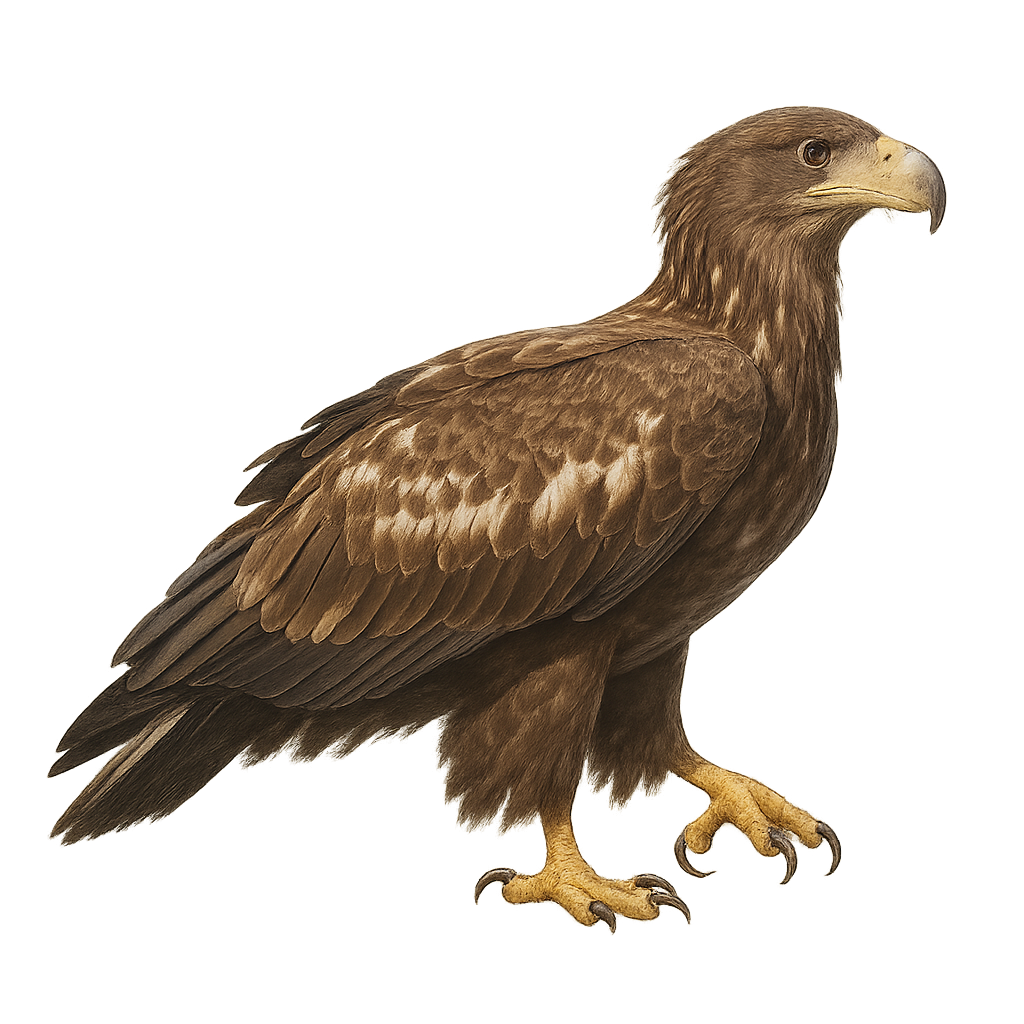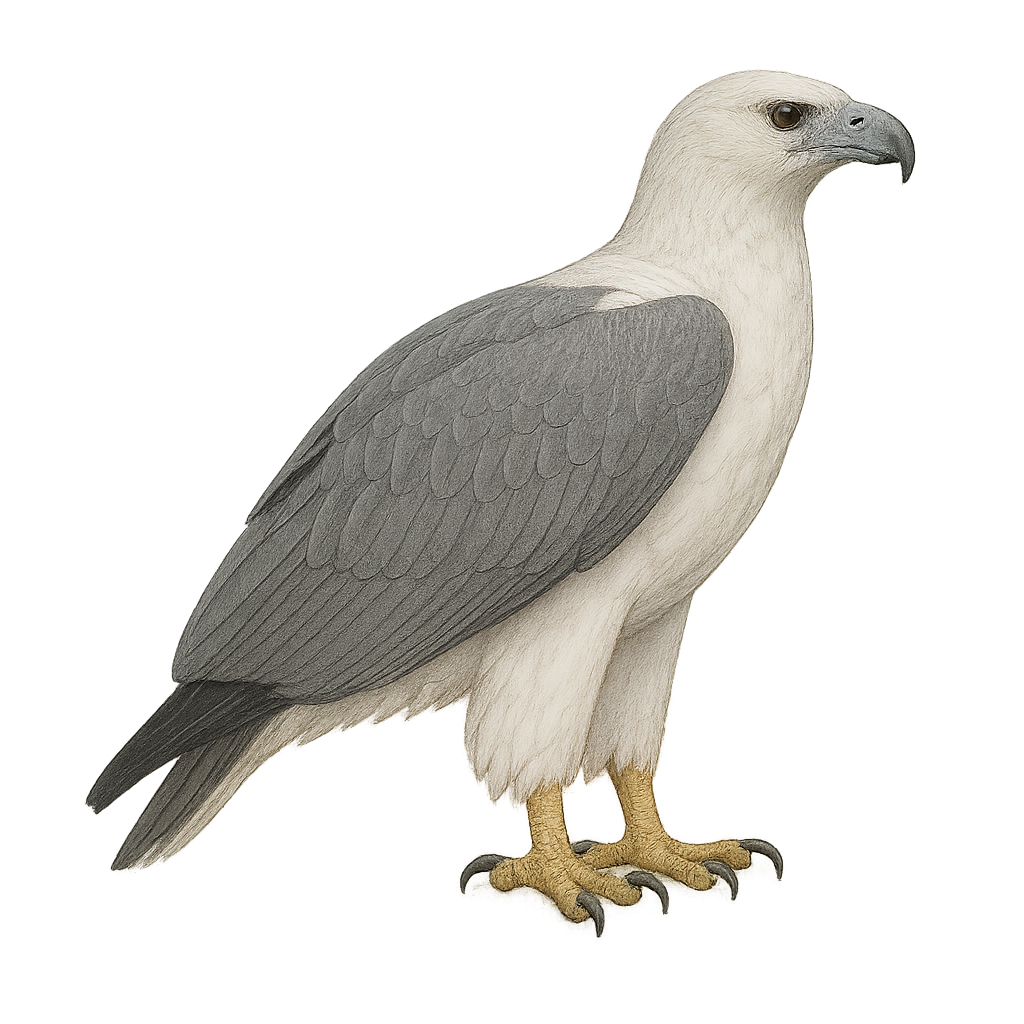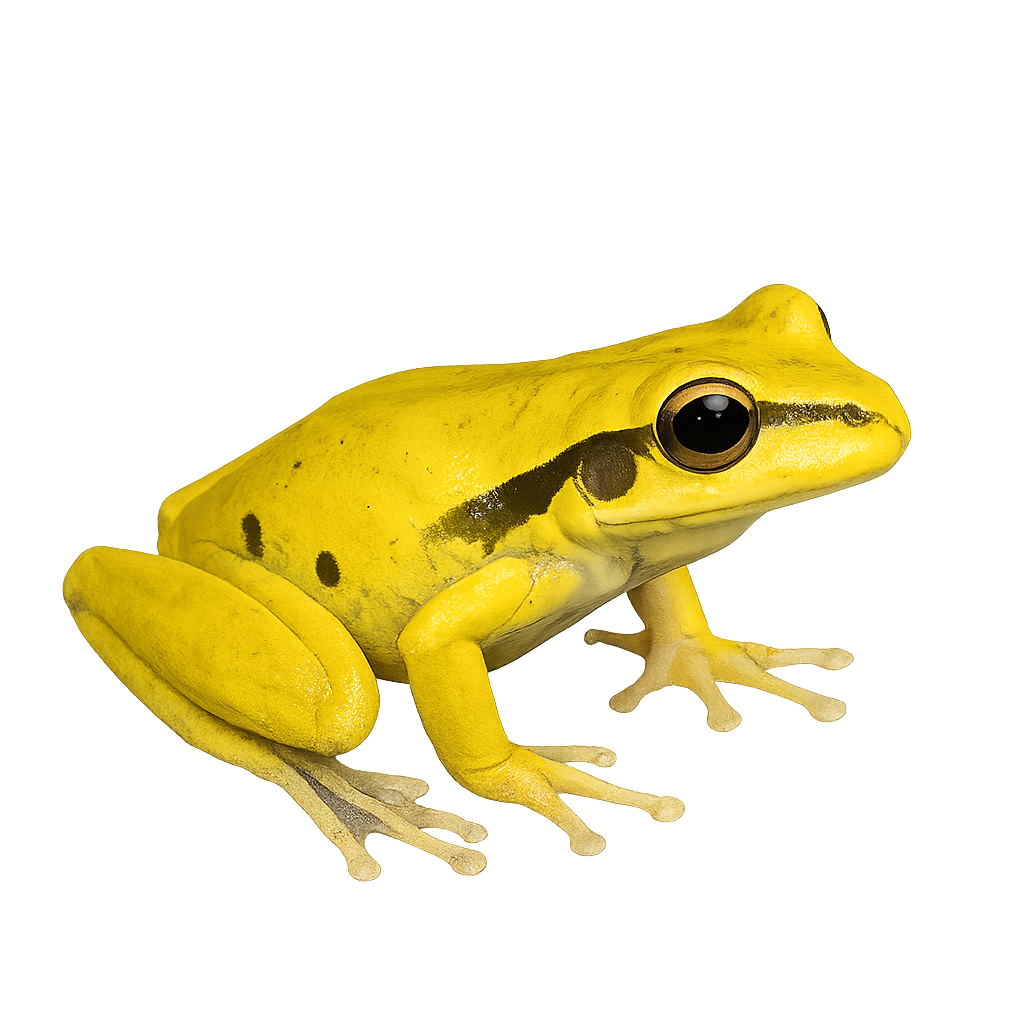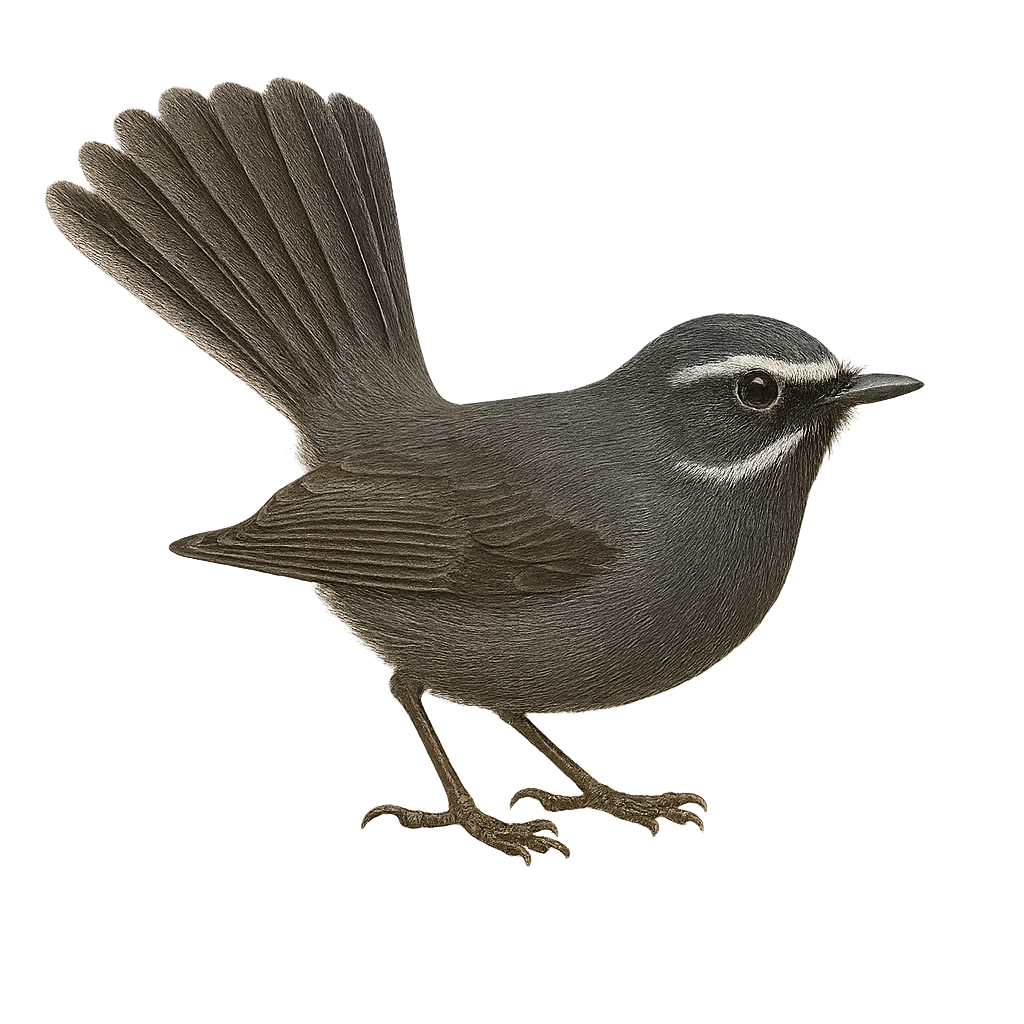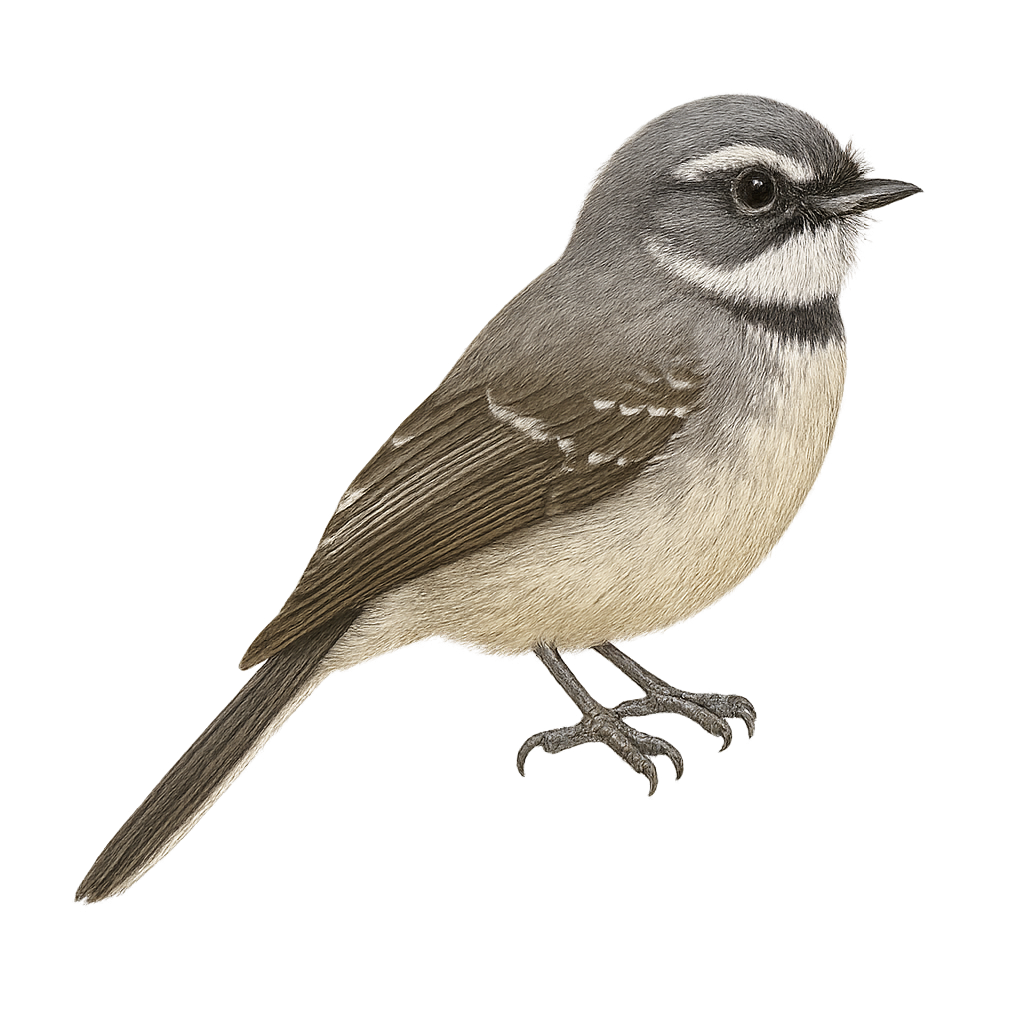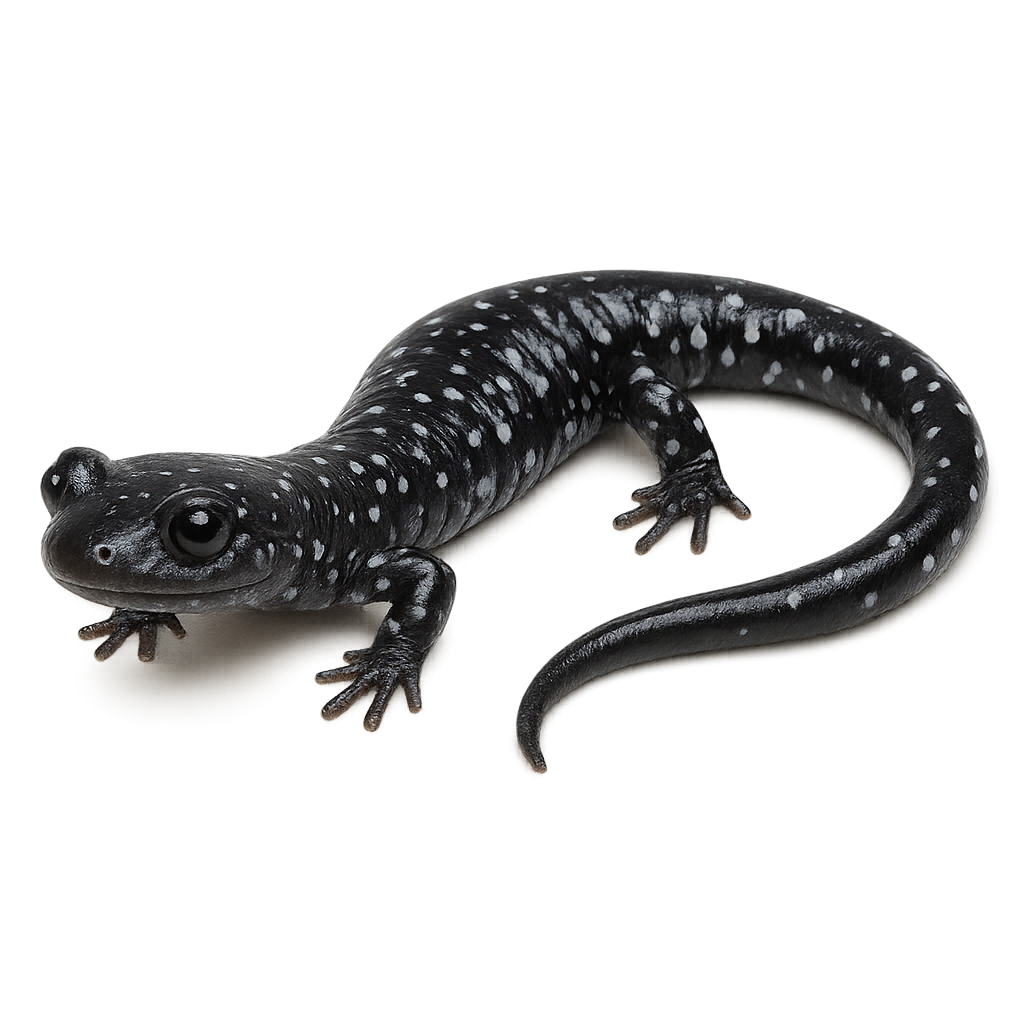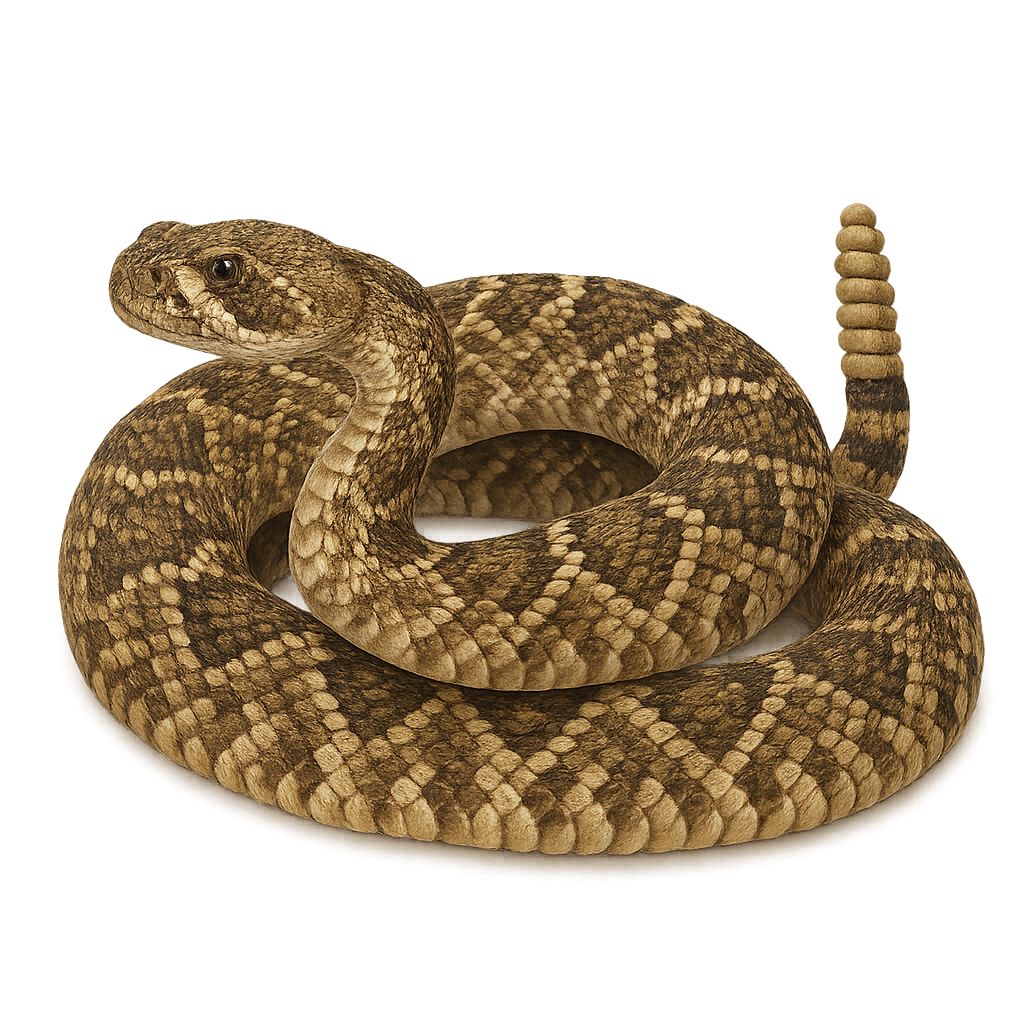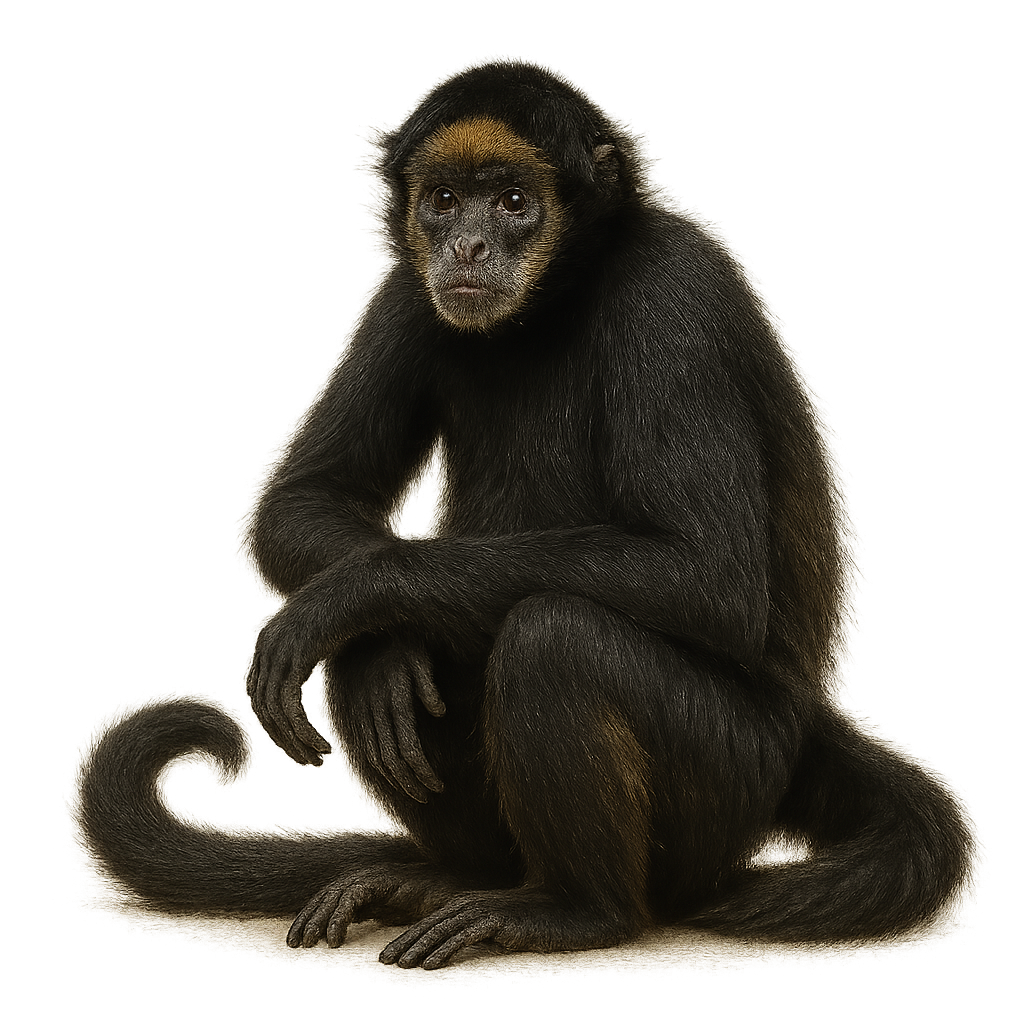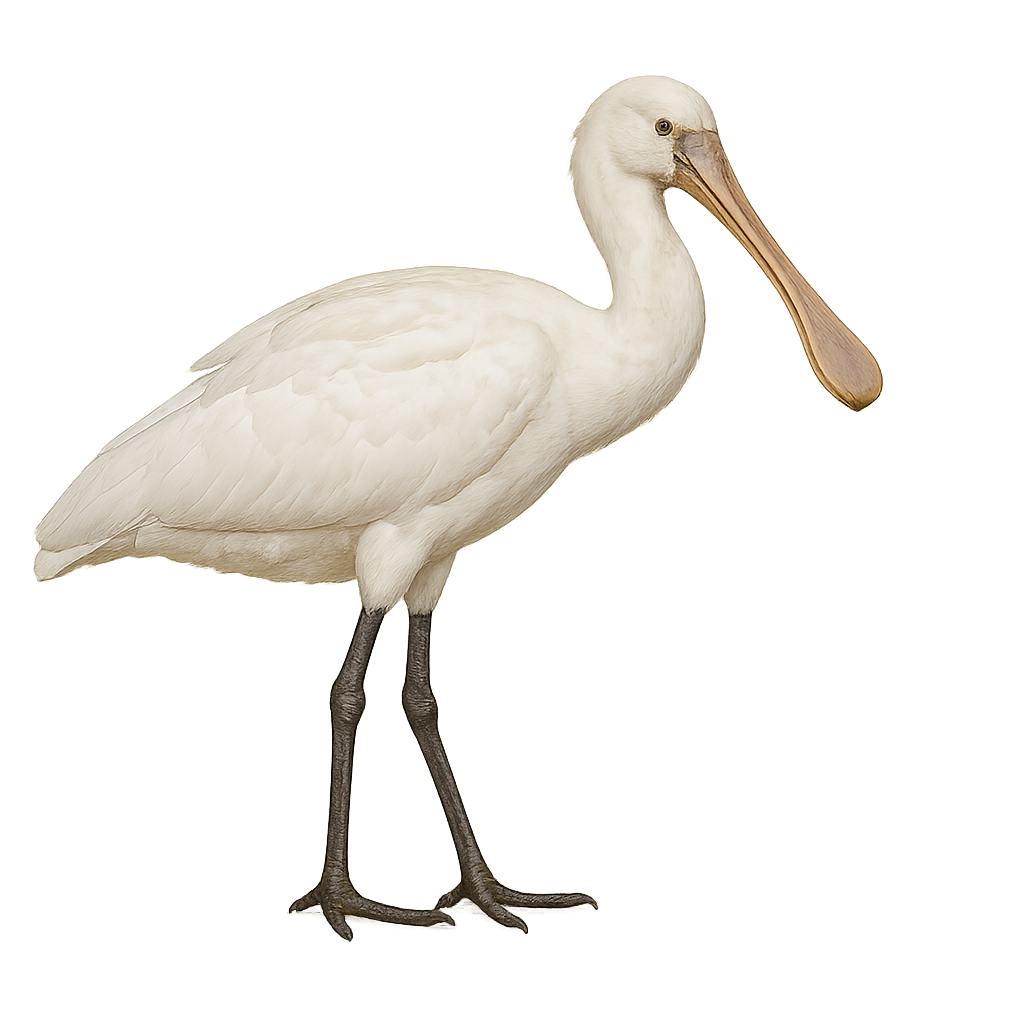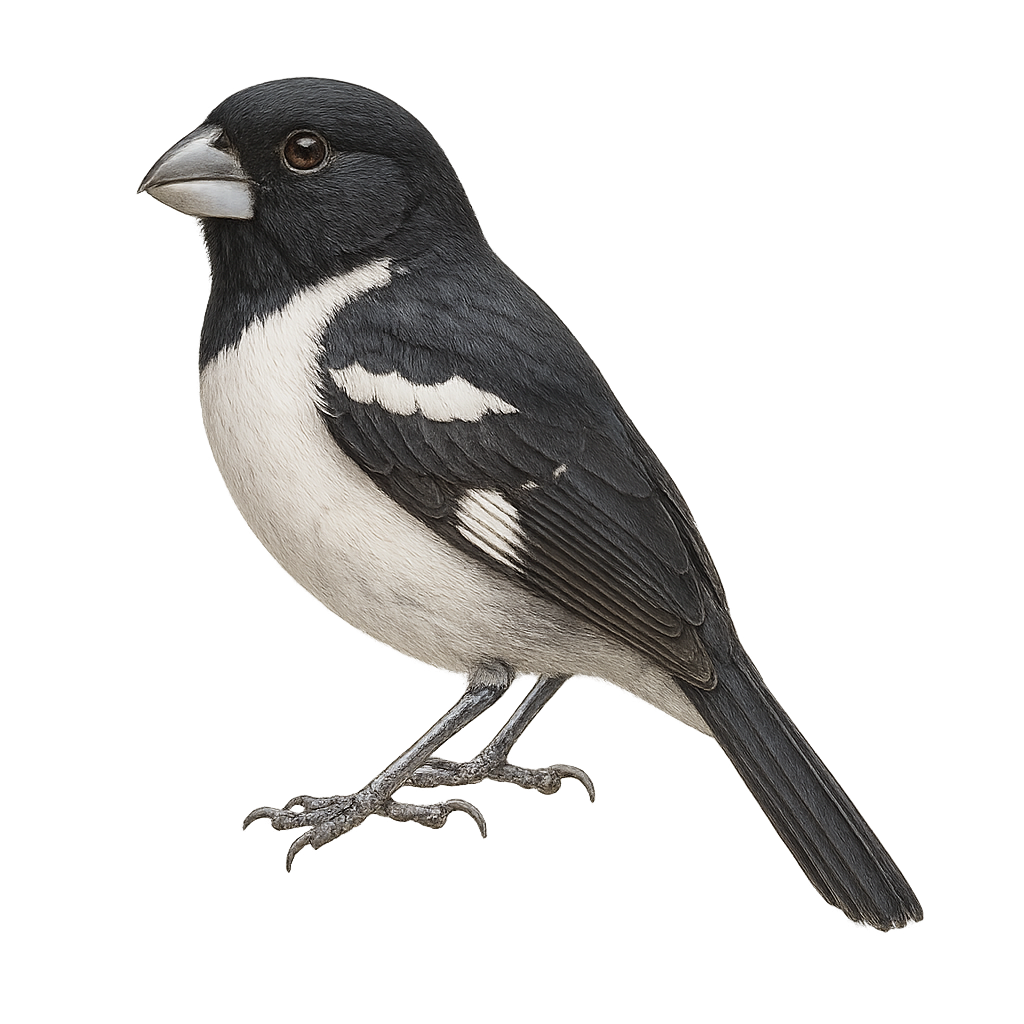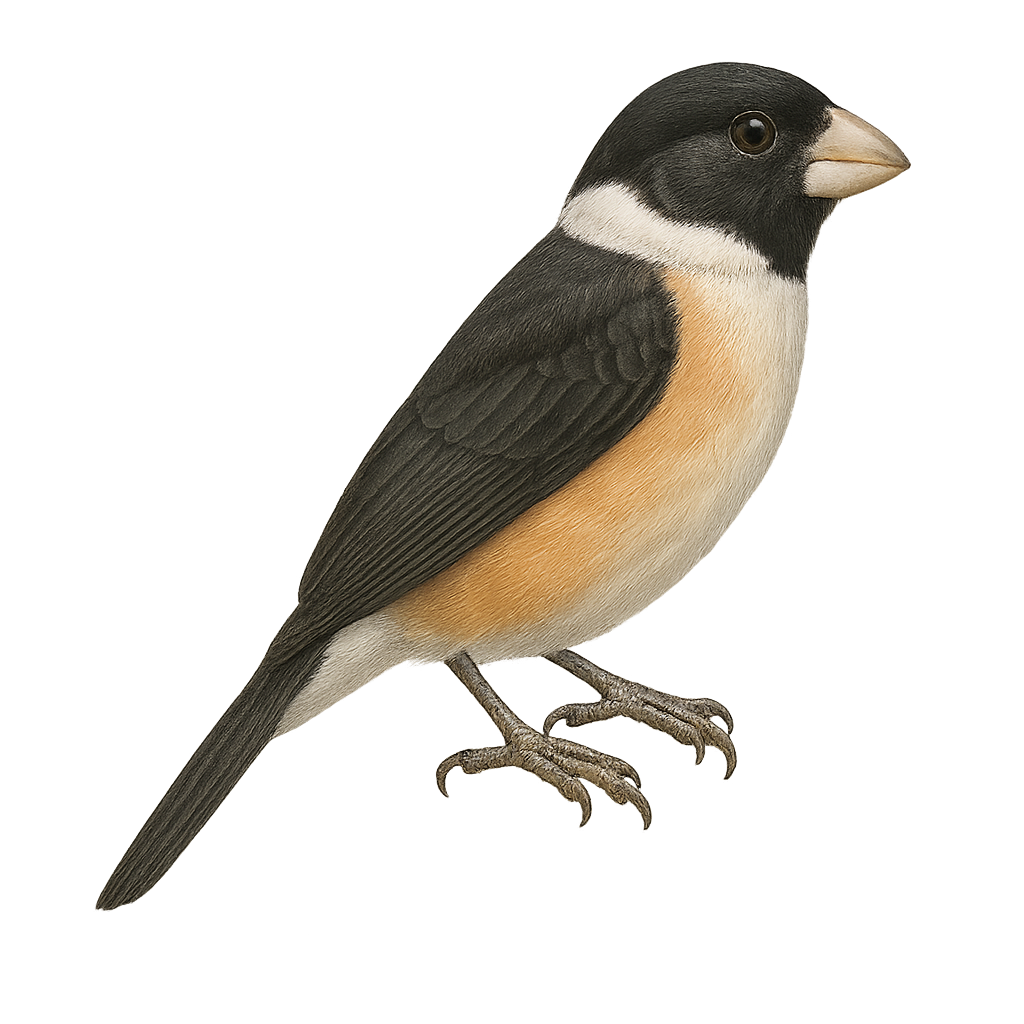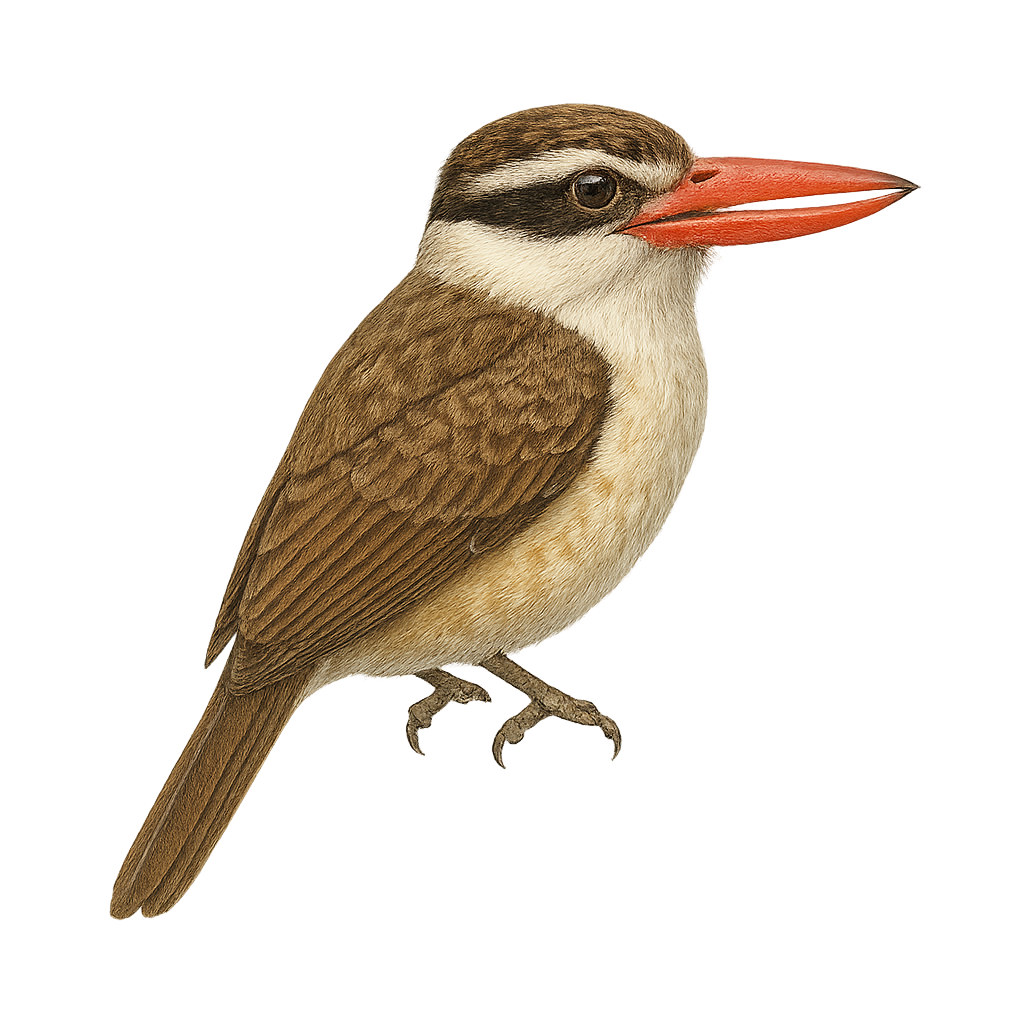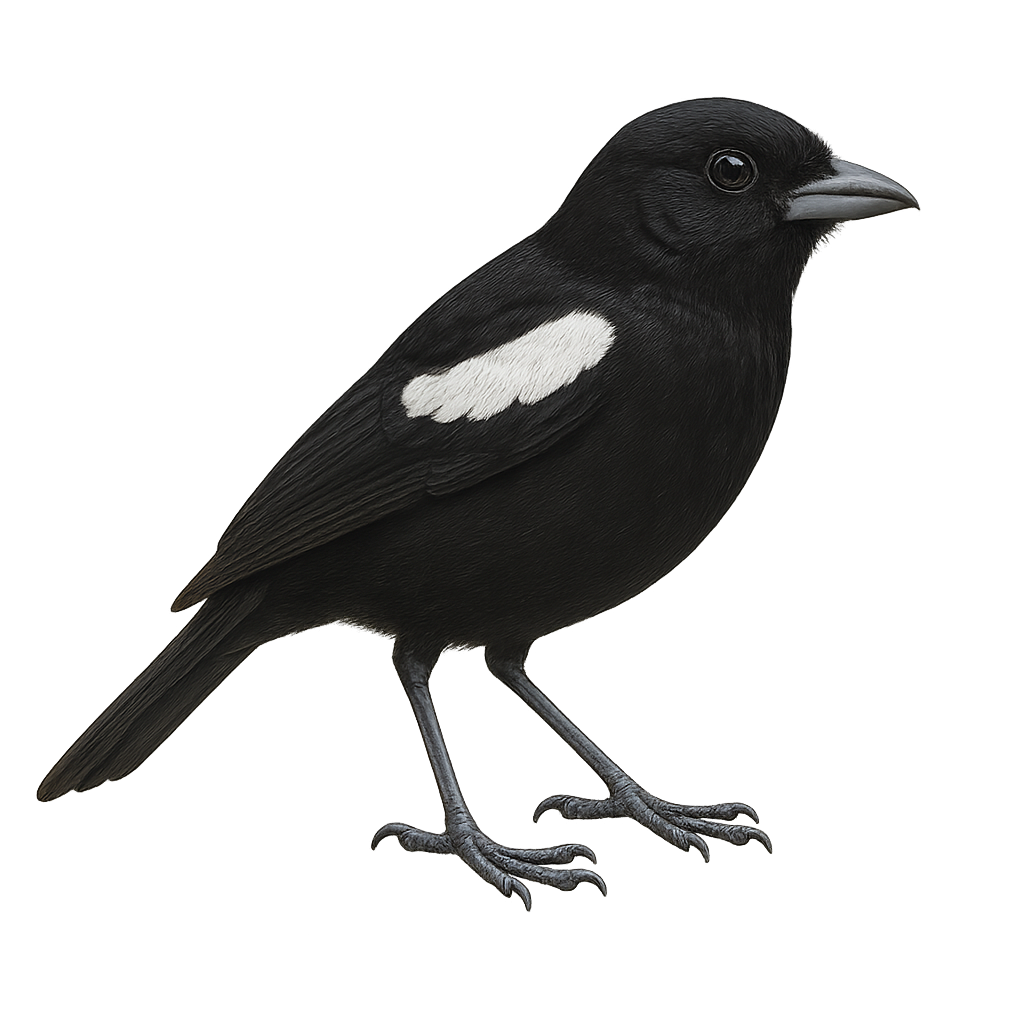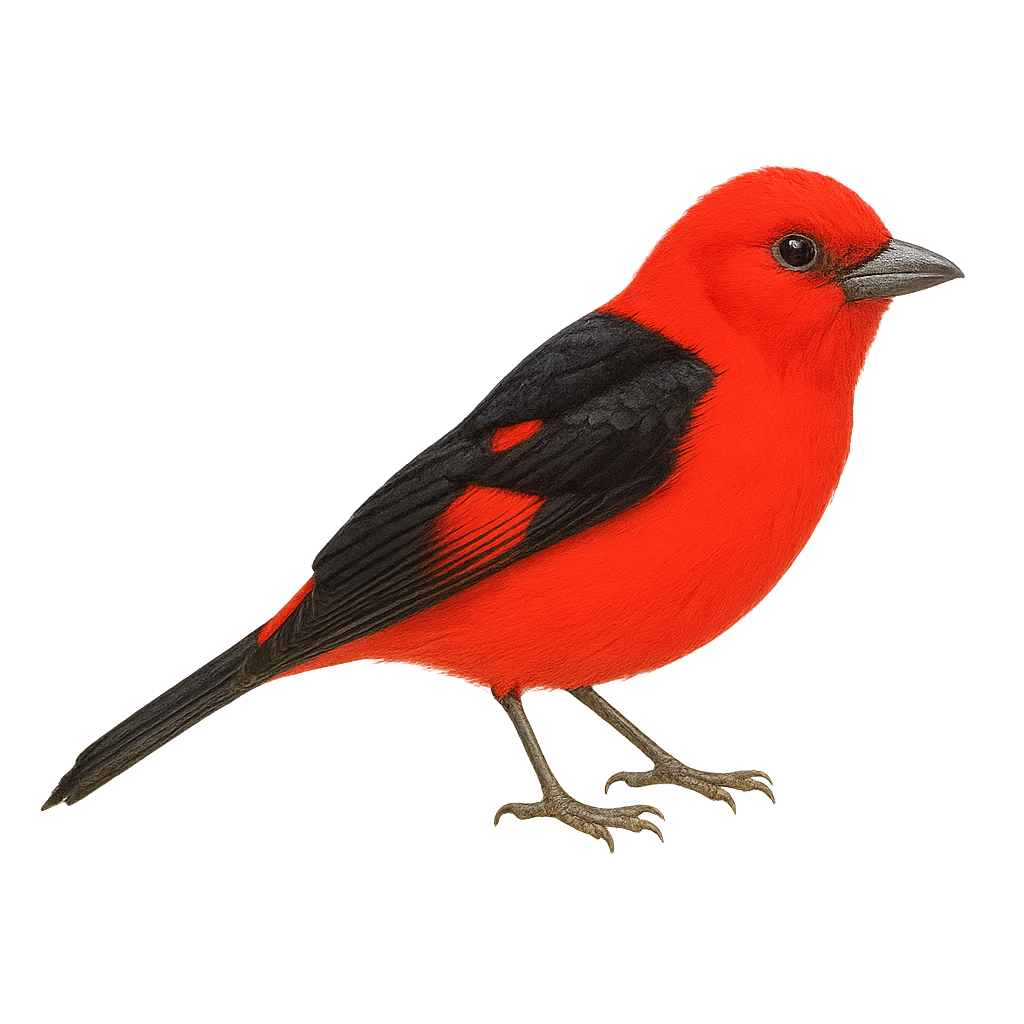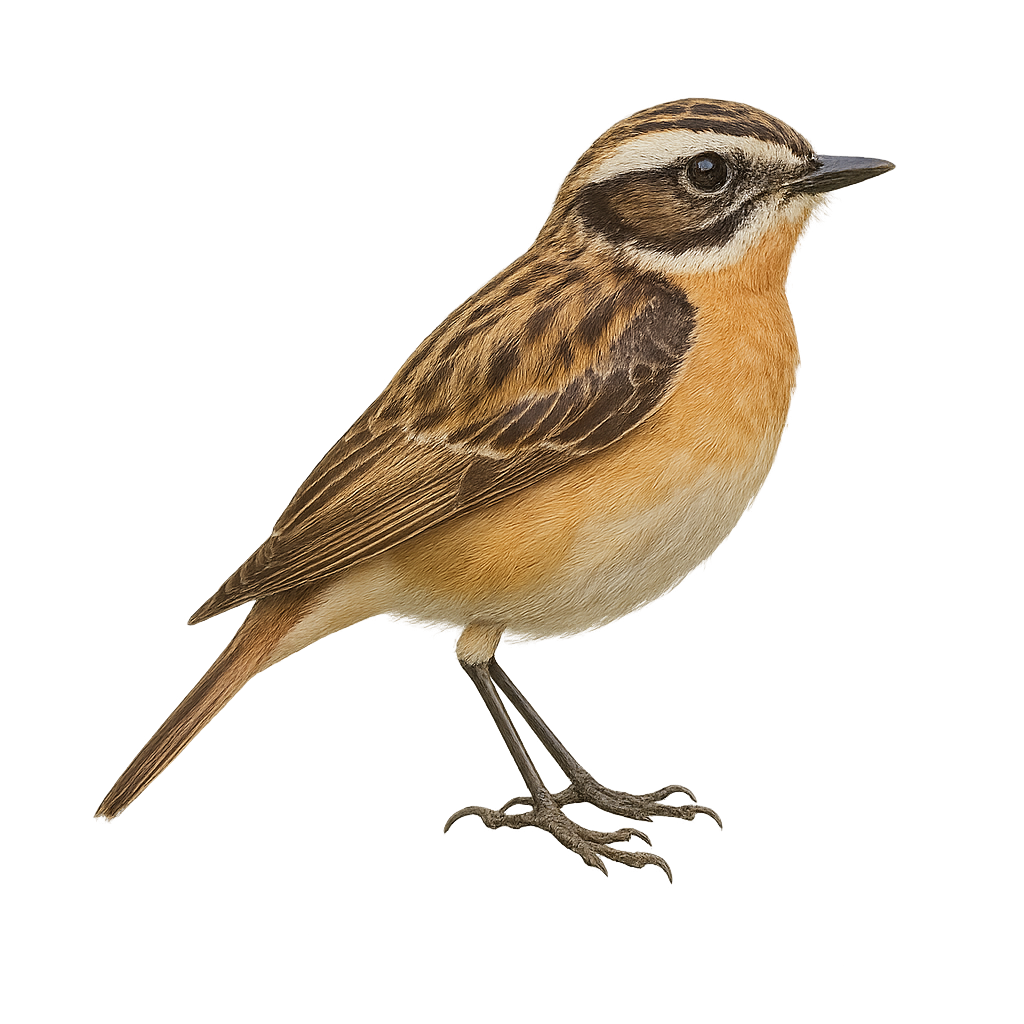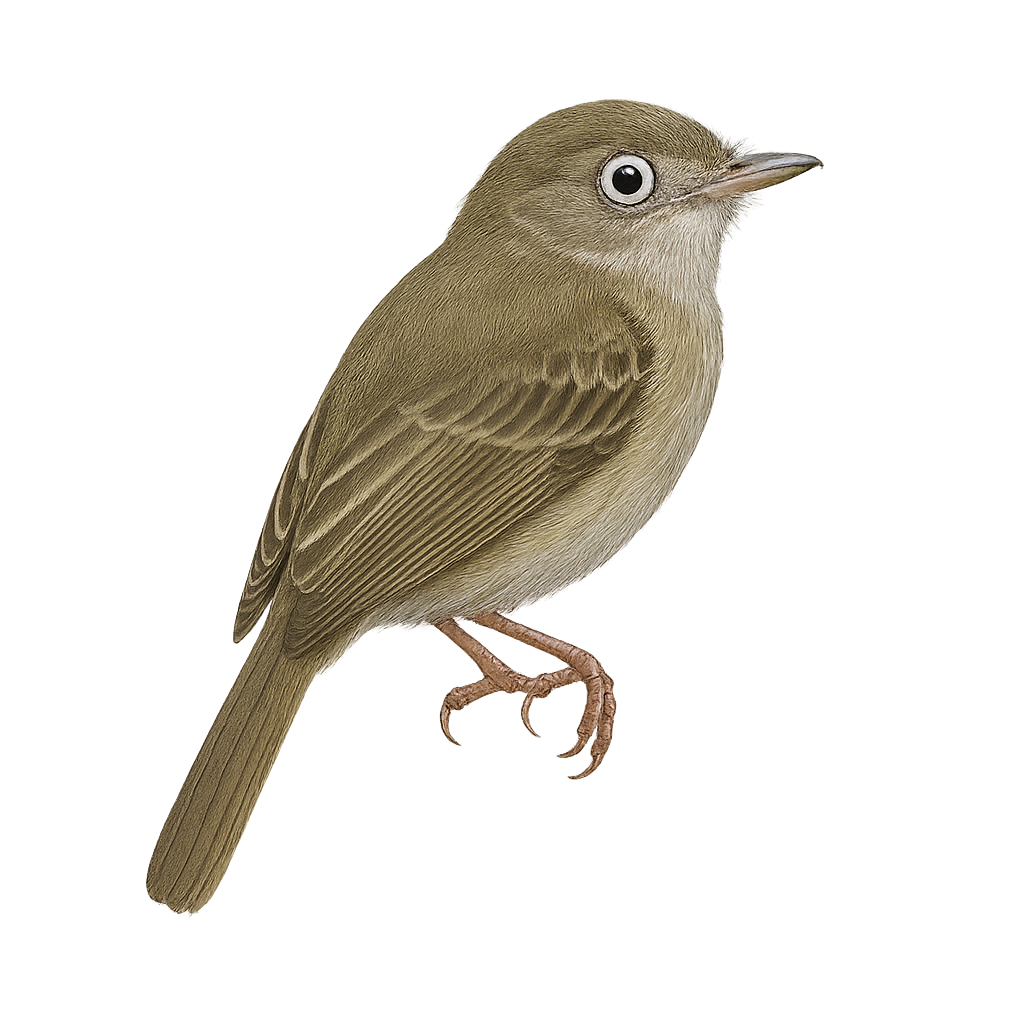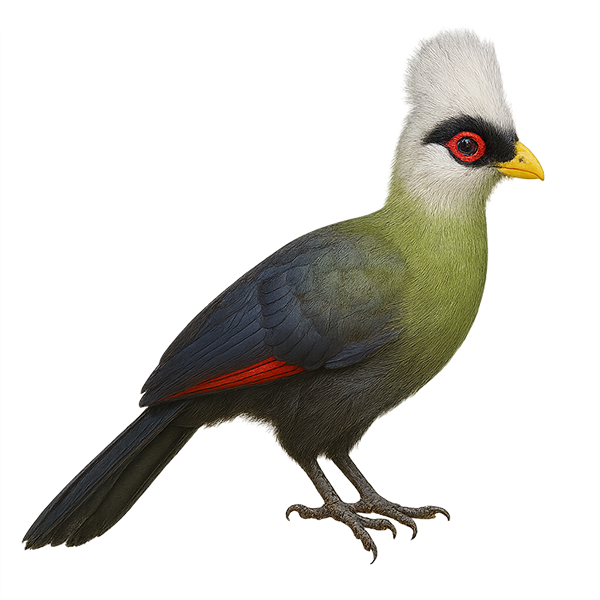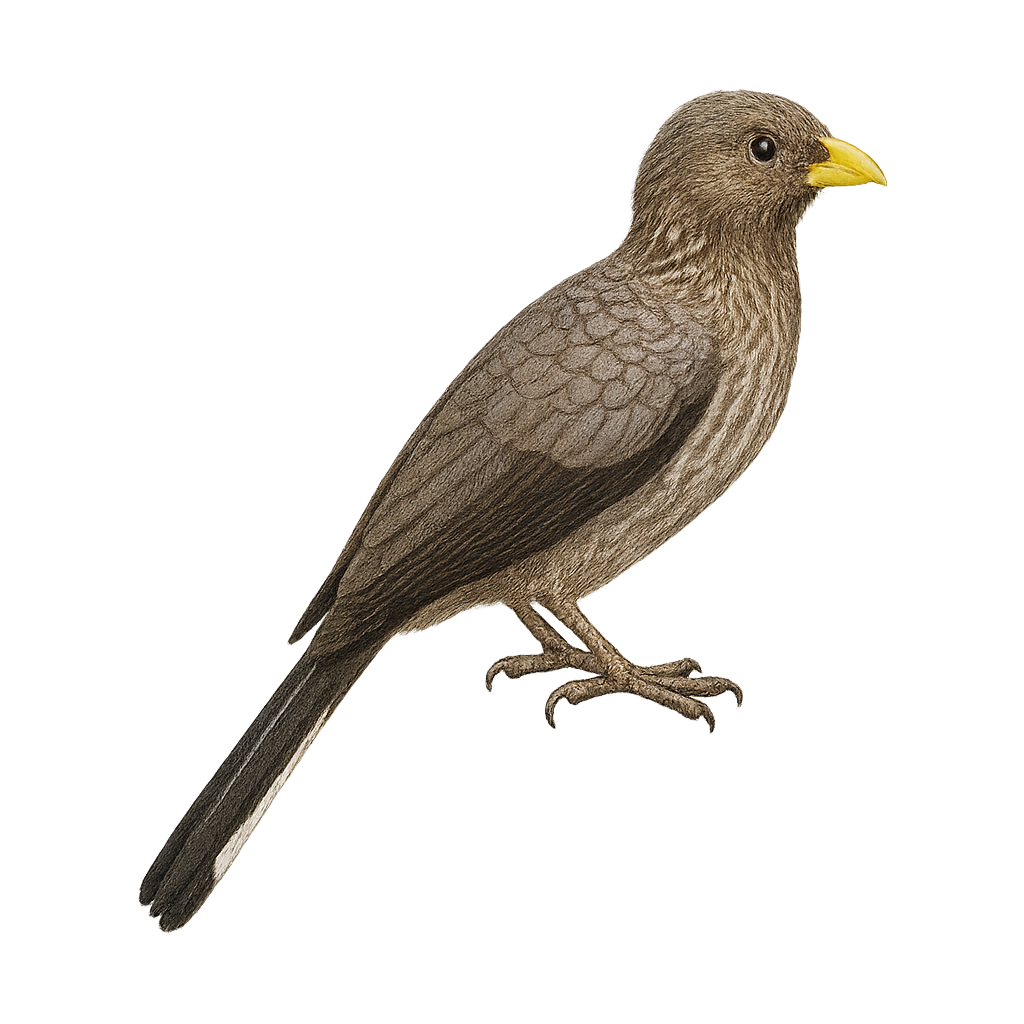The Wrybill, scientifically known as Anarhynchus frontalis, is an endemic bird of New Zealand. It is unique among birds for its bill, which curves to the right, an adaptation that allows it to efficiently probe river gravels for food, primarily aquatic insects and larvae. This medium-sized bird, measuring about 20 cm in length, has grey plumage on its back and white on its belly, with a distinctive black band on its forehead. It primarily inhabits riverbeds and estuaries, where it nests and breeds. Although its population is stable, it is considered vulnerable due to habitat loss and introduced predators.
The wood warbler is a small insectivorous passerine, 11–13 cm long, with greenish-yellow upperparts, whitish underparts and a bright yellow supercilium. A migratory species of open woodlands with sparse undergrowth, it feeds mainly on insects and spiders captured on the wing or among foliage. During breeding, males sing in flight or from perches to defend their territory.
The willow warbler is a small migratory passerine bird found primarily in forests, hedgerows, and bushes across Europe and Asia. It is easily recognizable by its olive-green back and pale yellow belly. This bird is primarily insectivorous, feeding on insects it catches in the vegetation. It is often heard singing in the undergrowth, especially during migration, where it establishes its territory for breeding.
The Wompoo Fruit Dove is a medium-sized bird with vibrant and varied plumage. Its body is primarily green, with a purple head and chest, and a yellow belly. This fruit-eating pigeon is mainly arboreal, feeding on fruits in the rainforests of Australia and New Guinea. It is often heard before seen, thanks to its distinctive, deep call. Though discreet, it plays a crucial role in seed dispersal, aiding in forest regeneration. Its presence is an indicator of the health of its natural habitat.
The White-tailed Eagle is a large raptor primarily found in Eastern Europe, Northern Asia, and some regions of Central Asia. It measures about 70 to 90 cm in length, with a wingspan of 1.8 to 2.3 meters, and weighs between 3 and 6 kg. Its plumage is primarily brown with a distinctive white head and tail. The White-tailed Eagle is an excellent fisherman, primarily feeding on fish, but it also hunts birds, small mammals, and scavenges carrion. It primarily inhabits areas near bodies of water such as lakes, rivers, and estuaries. While its population has been growing in some areas due to conservation efforts, this species remains vulnerable to habitat loss, water pollution, and human disturbances.
The White-bellied Sea Eagle is a large diurnal raptor, easily identified by its white head, belly, and tail, contrasting with its dark grey wings and back. It measures between 70 and 85 cm in length with an impressive wingspan reaching up to 2.2 meters. This predator primarily feeds on fish but can also capture birds, reptiles, and small mammals. It is often seen near coasts, estuaries, and large lakes, using its powerful talons to snatch prey. The White-bellied Sea Eagle is territorial and forms monogamous pairs for life. Its distinctive call, a loud "ki-ki-ki," often echoes through its natural habitat.
The Wilcox's Frog, or Litoria wilcoxii, is a tree frog species primarily found in the coastal regions of southeastern Queensland and northeastern New South Wales in Australia. It is recognizable by its smooth skin and bright green coloration, often speckled with golden or brown spots. This frog prefers humid habitats such as rainforests, swamps, and riverbanks with dense vegetation. It is mainly nocturnal, hiding in vegetation during the day and becoming active at night to feed on insects. Although its conservation status is currently "least concern," it is sensitive to environmental changes, particularly habitat loss and pollution.
The White-lipped Tree Frog, or Litoria infrafrenata, is a species of tree frog native to Australia and New Guinea. It is the largest tree frog species in the world, reaching up to 14 cm in length. Its coloration ranges from bright green to brown, with a distinctive white stripe along its lower lip. It has adhesive fingers that allow it to easily climb trees. This species is primarily nocturnal and feeds on insects and other small invertebrates. It prefers humid habitats such as rainforests, swamps, and riparian zones. Although it is widely distributed, it is sometimes threatened by habitat loss and pollution.
The White-throated Fantail, or Rhipidura albicollis, is a medium-sized bird easily recognized by its fan-shaped tail and contrasting plumage. It features a striking white throat that stands out against its dark gray body. This bird is often found in the tropical and subtropical forests of South and Southeast Asia, where it primarily feeds on insects. Agile and lively, it is known for its aerial acrobatics while hunting. The White-throated Fantail is a social bird, often seen in small groups or pairs. Its ability to adapt to various habitats, including gardens and parks, makes it a relatively common bird within its range.
The Willie Wagtail is a small, lively bird commonly found in Australia and parts of New Guinea. It is easily recognizable by its distinctive black and white plumage and long tail, which it frequently wags. This behavior helps it catch insects in flight. It prefers open habitats such as grasslands, sparse forests, and urban gardens. Although territorial, it is often seen following larger animals to catch insects they disturb. Its song is melodious and varied, making it popular among bird watchers.
The Walton's Finch, scientifically known as Carpodacus waltoni, is a member of the Fringillidae family. It is primarily found in the mountainous regions of the Himalayas, especially in Tibet and parts of China. This small passerine bird is notable for its striking plumage, with shades of pink and red on its chest and head, contrasting with a paler belly. Males display brighter colors than females, which are generally duller. The Walton's Finch is often seen in small groups, feeding on seeds and berries. It prefers open habitats such as alpine meadows and shrublands, where it can easily find food.
Plethodon albagula, commonly known as the Western Slimy Salamander, is an amphibian species in the Plethodontidae family. It is primarily found in the wooded regions of central United States, particularly in moist and shaded areas. This salamander is characterized by its smooth and moist skin, often black with white or grayish spots on its back. It typically measures between 10 and 15 cm in length. Nocturnal, it primarily feeds on insects and other small invertebrates. Unlike many other salamander species, it lacks lungs and breathes through its skin. Its reproduction is terrestrial, and it lays its eggs in moist places, where the larvae develop without an aquatic phase.
The White-rumped Seedeater is a small granivorous bird found mainly in sub-Saharan Africa. It is recognizable by its brown-grey plumage with a distinctive white rump, which gives it its name. Measuring about 12 cm in length, this bird prefers dry savannas and open shrublands. It primarily feeds on seeds but can also consume insects. The White-rumped Seedeater is often observed in small groups, especially outside the breeding season. Although not considered threatened, its habitat is sometimes affected by agricultural expansion.
The Crotalus atrox, commonly known as the Western Diamondback Rattlesnake, is a venomous snake found primarily in the southwestern United States and northern Mexico. It is easily recognizable by its diamond-shaped pattern on its back and its famous rattling sound, produced by the keratin segments at the end of its tail. This snake can reach a length of 1.5 to 2 meters. It prefers arid habitats such as deserts, grasslands, and sparse forests. Although venomous, it generally only attacks if it feels threatened. Its venom is hemotoxic, affecting blood and tissues, but bites are rarely fatal due to modern treatments.
The white-bellied spider monkey, Ateles belzebuth, is an arboreal primate primarily inhabiting the tropical forests of South America. Recognizable by its black fur and distinctive white face, it has long limbs and a prehensile tail that enable agile movement through the canopy. This social monkey lives in groups of up to 30 individuals, although they often split into smaller subgroups to forage. Primarily frugivorous, it also consumes leaves, flowers, and insects. Unfortunately, Ateles belzebuth is threatened by deforestation and hunting, leading to a decline in its population.
The White-breasted Nuthatch is a small bird with distinctive plumage, featuring a bright white breast, blue-gray back, and black cap. It is often seen climbing down tree trunks headfirst in search of insects and seeds. Its call is a nasal "yank-yank," easily recognizable. It primarily inhabits deciduous and mixed forests in North America. Although generally solitary, it can be seen in small groups outside the breeding season. The White-breasted Nuthatch is a resilient bird, capable of adapting to various habitats, including urban parks and gardens.
The Eurasian Spoonbill is a medium-sized bird primarily found in wetlands across Europe, Asia, and North Africa. It measures about 80 to 95 cm in length, with a wingspan of 120 to 130 cm, and weighs between 1.5 and 2.5 kg. Its plumage is predominantly white, with a long spoon-shaped bill that allows it to forage in shallow waters, primarily feeding on aquatic invertebrates, small fish, and crustaceans. The Eurasian Spoonbill is often seen in groups, feeding in marshes, rice fields, or estuaries. It is migratory, moving to warmer regions during the winter. While its population remains stable in certain areas, the Eurasian Spoonbill faces threats related to habitat loss, water pollution, and urbanization.
The Wing-barred Seedeater, or Sporophila americana, is a small passerine bird belonging to the Thraupidae family. It is primarily found in the Neotropical regions, especially in Central and South America. This bird is characterized by its subtle plumage, often grayish with lighter shades on the belly. Males sometimes display more pronounced patterns, including white wing bars. The Wing-barred Seedeater inhabits various environments, from open forests to agricultural areas, savannas, and marshes. It mainly feeds on seeds but can also consume insects. Its song is melodious yet discreet, often heard at dawn.
The White-collared Seedeater, or Sporophila torqueola, is a small passerine bird belonging to the Thraupidae family. It is primarily found in the tropical and subtropical regions of Central America, particularly in Mexico and Guatemala. This bird is known for its contrasting plumage: males have a distinctive white collar around their necks, while females exhibit more subdued, often brownish tones. The White-collared Seedeater inhabits open areas such as grasslands, cultivated fields, and forest edges. It primarily feeds on seeds but can also consume insects. Its melodious song is often heard at dawn and dusk, making it a favorite among birdwatchers.
The White-eared Puffbird, scientifically known as Nystalus chacuru, is a medium-sized bird belonging to the Bucconidae family. It is characterized by its brown and white plumage, with a distinctive white band on the forehead and around the eyes. This bird is primarily found in South America, particularly in Brazil, Bolivia, and Paraguay. It inhabits dry forests, savannas, and open wooded areas. The White-eared Puffbird is an opportunistic predator, feeding mainly on insects and small vertebrates. It is known for its melodious and repetitive song, often heard at dawn. Although relatively tolerant of human presence, it prefers habitats with dense vegetation, providing protection from predators.
The White-lined Tanager, or Tachyphonus luctuosus, is a medium-sized bird, measuring about 18 cm in length. It is easily recognizable by its glossy black plumage in males, with distinctive white lines on the wings, while females have a more subdued olive-brown hue. This bird is primarily frugivorous but also feeds on insects, making it an important player in seed dispersal and insect population control. It is mainly found in tropical rainforests, forest edges, and secondary wooded areas in Central and South America. Although quite common in its natural habitat, it is often difficult to observe due to its rather discreet and suspicious behavior.
The White-winged Tanager, or Piranga leucoptera, is a colorful bird primarily inhabiting the tropical and subtropical forests of Central and South America. This tanager is distinguished by its vibrant plumage, with males displaying a striking red contrasted by distinctive white wings, while females exhibit more subdued shades of yellow and olive. Measuring about 18 cm in length, this bird is often seen in pairs or small groups, feeding mainly on fruits and insects. Although relatively discreet, its melodious song and vivid colors make it easily noticeable in its natural habitat.
The White-rumped Tanager, or Cypsnagra hirundinacea, is a distinctive bird of the South American savannas. It is characterized by its black and white plumage, with a prominent white patch on the rump, especially visible in flight. This bird measures about 16 cm in length and weighs between 20 and 25 grams. It is often seen in small groups, feeding mainly on insects caught on the ground or in bushes. Its voice is a mix of whistles and trills, often heard at dawn. The White-rumped Tanager is a resilient bird, capable of adapting to modified environments, although it prefers open and semi-open habitats.
The Wood Stork, or Mycteria americana, is a large wading bird known for its striking white plumage contrasted by its black head and neck. It has a long, sturdy bill, slightly curved, perfect for catching aquatic prey. This majestic bird primarily inhabits wetlands, such as marshes and mangroves, where it feeds on fish, crustaceans, and insects. The Wood Stork is often seen in groups, making it easier to spot. Although it is relatively tolerant of human presence, it is essential to maintain a respectful distance to avoid disturbing its natural behavior. Its breeding season varies by region but generally coincides with the rainy season, ensuring an abundance of food for the young.
The whinchat is a small passerine bird found primarily in meadows, cultivated fields, and open areas across Europe and Asia. It is easily recognized by its brown and beige plumage, orange chest, and white markings on its head. This small bird primarily feeds on insects, which it catches by flying or by perching to observe its surroundings. The whinchat is also known for its territorial behavior and distinctive song.
The Wallcreeper is a small bird found primarily in rocky cliffs and mountains of Europe, notably in the Alps, the Pyrenees, and the Carpathians. It typically measures about 14 to 16 cm in length and weighs between 12 and 20 g. Its plumage is characterized by distinct patterns of white, gray, and black, with very prominent white markings on its wings. The Wallcreeper is an excellent climber, capable of moving on almost vertical rock faces thanks to its strong claws. It primarily feeds on insects, small arachnids, and larvae that it finds in rock crevices. Although it is a relatively rare bird, the Wallcreeper is threatened by the disturbance of its rocky habitats, particularly due to urbanization and the exploitation of natural resources.
The White-eyed Tody-Tyrant is a small passerine bird belonging to the Tyrannidae family. It is notable for its distinctive white eyes, contrasting with its olive-green and yellow plumage. This bird is primarily found in the humid tropical forests of South America, particularly in Brazil, Bolivia, and Peru. It is often seen in dense undergrowth, where it feeds on insects and spiders. Its song is a high-pitched, rapid trill, often heard before it is seen. Although discreet, it is curious and can be observed at altitudes up to 1500 meters. Its population is stable, but deforestation remains a potential threat to its natural habitat.
The White-eyed Tody-Tyrant, or Hemitriccus zosterops, is a small bird from the Tyrannidae family. It is primarily found in lowland humid forests in South America, particularly in Brazil, Bolivia, and Peru. This passerine is notable for its white eye-ring, which gives it its name. With a modest size of about 9 cm in length, its olive-green plumage with yellowish underparts makes it hard to spot in dense habitats. It feeds mainly on insects, which it catches in flight or on leaves. The White-eyed Tody-Tyrant is an active and vocal bird, often heard before seen. Its song is a rapid, high-pitched trill.
The White-crested Turaco is a striking bird known for its distinctive white crest and vibrant green plumage. Native to the forests of West Africa, it is often seen in the canopy where it primarily feeds on fruits, but also flowers and leaves. Measuring about 43 cm in length, this bird has a fast and direct flight. Its call is a loud and repetitive "kow-kow". Although sociable, it remains cautious around humans. The White-crested Turaco plays an important ecological role by dispersing the seeds of the fruits it consumes. Its beauty and intriguing behavior make it a subject of interest for ornithologists and nature photographers.
The Western Plantain-eater, or Crinifer zonurus, is a fascinating bird from the Musophagidae family. It is primarily found in West Africa, where it inhabits tropical forests, savannas, and wooded areas. This bird is recognizable by its gray-brown plumage, long tail with white bars, and bright yellow beak. Turacos are known for their distinctive call and ability to move nimbly through trees. They primarily feed on fruits but also consume leaves, flowers, and insects. Their social behavior is interesting, as they often live in small family groups. Although they are relatively common within their range, their habitat is threatened by deforestation.


